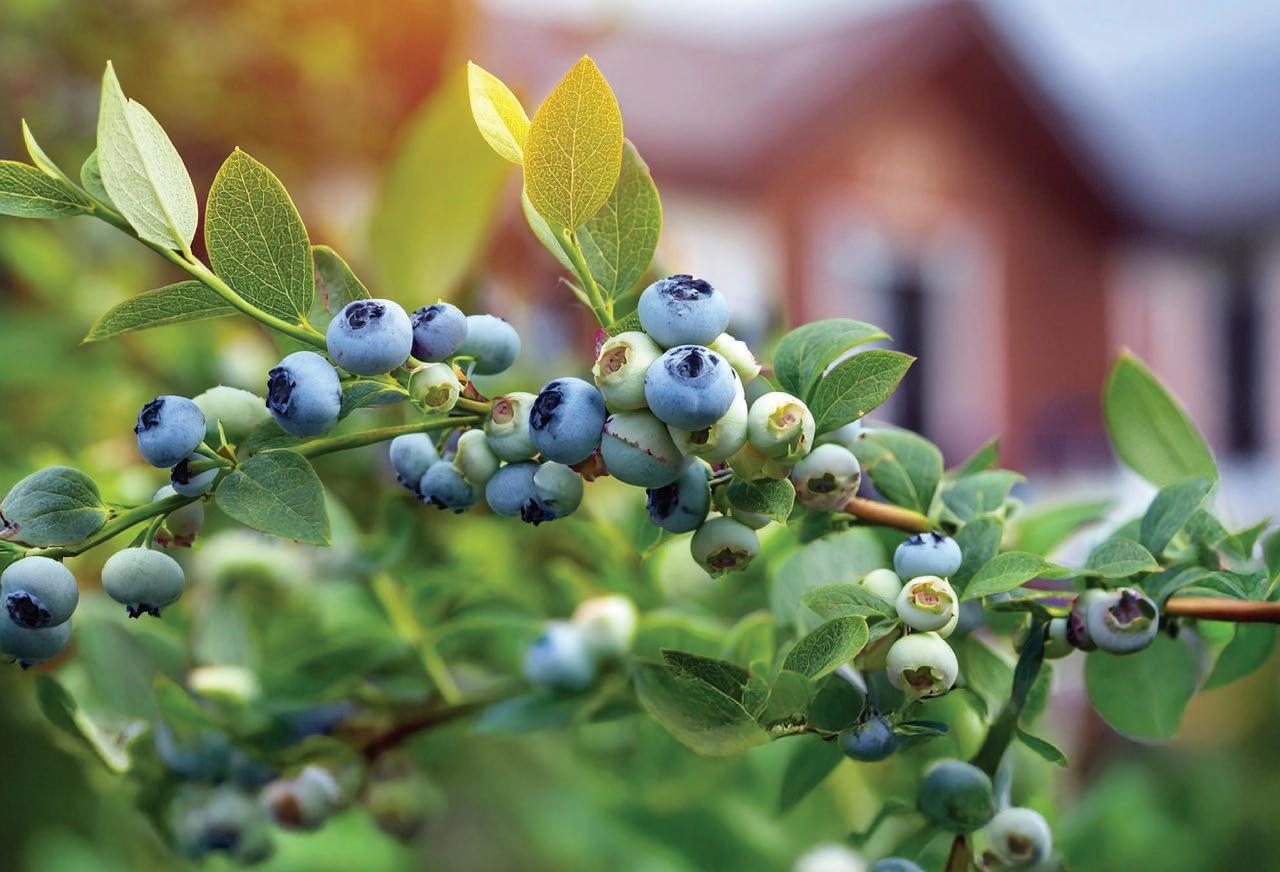
5 minute read
YOUR YARD CAN HELP SHAPE THE FUTURE
Climate Resiliency Begins at Home
Editorial by Dr. Charles Clarkson, Director of Avian Research
There is currently a great deal of discussion about offshore wind, solar installations and electric cars. While these items will help reduce our contribution to climate change and begin to reverse the damage done to this planet from hundreds of years of use of non-renewable carbon-based fuels, the truth is that there are other, equally important conversations we need to be having.
As of 2022, 144 million homes dotted these United States. Approximately 60% of the land area of this country is now privately-owned, totaling 1.4 billion acres or an area roughly 7.5 times the size of the state of Texas. And nearly all of this land contains manicured lawns and non-native landscaping that represents a substantial amount of potential wildlife habitat…if it is managed wisely.
Small Patches of Habitat Bring Large Benefits
In a now classic research paper by David Mehlman and colleagues, the habitats available along avian migratory routes were classified into one of three categories based on their capacity to meet the needs of birds. At one end of the spectrum lie what Mehlman termed “full service hotels” – large, contiguous habitat patches that contain a wealth of resources. At these locations, emaciated and exhausted birds will find abundant food to replace lost fuel and a safe place to rest. Sites such as these include Audubon’s Fisherville Brook and the George Parker Woodland Wildlife Refuges.
At the other end of the spectrum lie what are referred to as “fire escapes”. These habitat patches tend to be small, isolated and surrounded by inhospitable landscapes, such as heavy urban development. While these habitats are not capable of providing abundant, high quality fuel and tend to have elevated predation risk, they offer respite for birds in dire need of rest due to physical exhaustion or emergency situations such as unfavorable weather. Many birds stop at these locations for a brief period, often only to gain rest before moving on. If properly managed, privately owned yards can serve as “fire escapes” for birds.
We discuss the importance of proper siting of wind and solar arrays – of using data to ideally direct their placement where potential damage to natural resources is minimized to the greatest extent possible. But, it is important to understand that while we look to our global oceans for solutions to our climate and biodiversity crises, a good deal of the answer lies in our own backyard.
Our Manicured Lawns are Dead Zones for Biodiversity
How much siting was done when your home was built to avoid impacting the local biodiversity? For most homes, the likely answer is: none at all. Native habitat was removed, wildlife was displaced and your tenure on the land marked a new era in which nature took a backseat to your activities. Since the creation of our “homesteads”, our properties have become a far cry from the rich and diverse habitats they replaced. Our manicured lawns, maintained through the use of chemical fertilizers and pesticides, and our gardens replete with exotic plantings and little structural diversity serve, for the most part, as a dead zone for biodiversity. Indeed, most yards would scarcely qualify as a “fire escape” for migrating birds in need.
Research from Audubon’s recent partnership with the NASA Develop program projects that the state of Rhode Island will lose nearly 9,000 acres of forest and gain over 6,000 acres of urban habitat by 2043. In this rapidly urbanizing landscape, we need to provide oases for wildlife.
Your Yard Has the Power to Help Shape Our Future
As most of our country is privately owned, the collective power of individual action on the part of homeowners can literally transform our landscape. By halting the use of chemicals on our lawns and gardens, planting native vegetation to restore food webs and providing essential resources for wildlife (nesting sites, water and food), you can instantly transform your property into a refuge. Your own wildlife refuge, located right outside your front door.
And, before you write this off because you deem your yard to be “too small to make a difference”, research by Doug Tallamy, an entomologist at the University of Delaware has shown that planting a single oak tree can provide for the needs of up to 4,000 different species. Don’t have enough space for an oak tree? A single native blueberry bush can support nearly 300 species. As a landowner, it is important to remember that you hold a piece of our planet as your own. What you choose to do with your piece literally has the power to change the world.

GET YOUR YARD BUZZING!
Audubon Pollinator Alliance
Help Audubon connect neighbors and communities to form a state-wide network of pesticide-free habitat. Information on your pollinator garden and others across the state will inform decisions on policy and rally others to the cause. Visit asri.org/pollinators/alliance.html.
Habitat at Home
Audubon can help transform your yard into healthy habitat! Private assessments are available with Scott Ruhren, Senior Director of Conservation. Review your property, discuss goals, and receive a plan for creating wildlife habitat at your home. Email sruhren@asri.org for more information.
Audubon Pollinator Lecture and Garden Workshops
Learn from Audubon experts on how to transform your property into healthy habitat for pollinators, birds and other wildlife. Register on the Events Calendar at asri.org/calendar.
Lecture: Protecting Pollinators in Your Landscape; Powder Mill Ledges Wildlife Refuge, Smithfield, RI; July 31, 2025; 6:30–8:00pm.
Workshops: Designing a Wildlife Garden; Audubon Nature Center and Aquarium, Bristol, RI; Three dates offered: June 4, 2025; 6:30–8:00pm | July 19, 2025; 1:00–2:30pm | August 9, 2025; 1:00–2:30pm.










